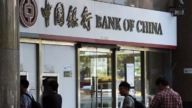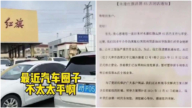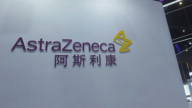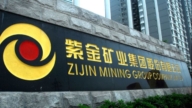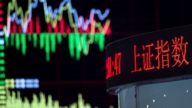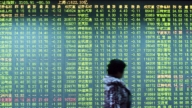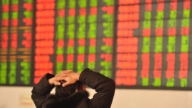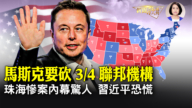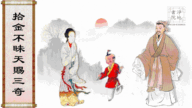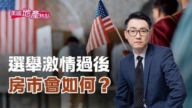【新唐人2014年01月03日訊】中國大陸2013年最後一天股市收盤,滬指報收2,115.98點,比前一年下跌6.75%。上證指數不僅與美股三大指數、及歐洲三大股指的強勁上走形成鮮明對比,在亞洲市場排名中也排名最後。2014年的第一天,中共財政部副部長感嘆,中國經濟難以為繼。
在2013年最後一天,美國股市再創新高,全年漲幅創下16年來最高。美國道瓊斯工業平均指數,以及標準普爾500指數,都超過金融危機之前的最高峰值,創下了新記錄。 道瓊斯指數全年上漲26.5%,為自1995年以來最大漲幅﹔標普500指數全年上漲29.6%,為自1997年來最佳表現,納斯達克指數全年上漲38%,為自2009年以來最大漲幅。
歐州股指2013年纍計上漲17.3%,創4年最大漲幅。31號收盤時,泛歐斯託克600指數上漲0.3%,收報328,創5年半新高。
在亞洲股指中,除泰國和印度尼西亞股指,年度下降分別為6.7%和0.98%外,其他所有國家在2013年都有所上升,其中日本漲幅第一,日經225指數,在一年內上漲了56.7 %,形成1972年以來最高年度增幅。
而中國股市不但沒漲,表現甚至比連續街頭抗議造成首都陷於混亂的泰國還差。截至12月31號收盤,滬指報2,115.98點,全年跌幅6.75%,連續4年全球墊底。今年最低點曾經跌到1,849點,超過萬億元的市值蒸發,直接造成財富縮水。
去年1月4號,中共官媒發表文章預言,2013年上證綜指上限為3,600點,並且有望突破4,000點。不過結果卻恰好相反。
大陸民間經濟學者 鄧先生:「股市是國家經濟的風向標,它更多是有趨勢性的,它已經從實體經濟的寒冬已經來臨感受到了,那對股市而言就是深冬,現在是隆冬了,最起碼對目前而言,我認為是一個階段性的警惕。」
近幾年,海外經濟學家一直在談論,中國的經濟在硬著陸。中共新政上任後也意識到中國經濟的危險程度,從而「壯士斷腕」,「深化改革」,「全面改革」等說法此起彼伏。
2014年第一天,中共機關刊物《求是》雜誌,刊登中共財政部副部長王保安的文章指出,長期以來,中國經濟增長呈現典型的「四高四低」特徵,也就是「高投入、高消耗、高污染、高速度」,與「低產出、低效率、低效益、低科技含量」。王保安也承認,中國經濟的現行版難以為繼。
鄧先生:「我們不是著陸了,我們已經掉到溝裡了,去看看實體經濟,各行各業的問題,民營企業家是最有發言權的,前一段時間的資本外流,不是證明了一個很危險的信號嗎?」
王保安說,中國單位國內生產總值(GDP) 能耗,是世界平均水平的2.6倍。中國每個就業者創造的GDP僅為美國的21%、日本的32%。多年來,中國工業增加值率基本在26%到30%,而發達國家一般為35%左右,美國、德國等超過40%。
據測算,中國GDP每增長1美元,大約需要5美元的投資,資金投入成本比日本和南韓經濟起飛時期要高40%之多。中國的投資率已接近50%,有的省份甚至達到80%。
大陸金融分析師任中道:「中共的制度導致了中國是靠政府投資去拉動GDP的增長,但是現在投資也玩不轉了,投入一塊錢只有幾毛錢的價值產出,所以它拉動不了經濟的增長。」
中共審計署最新報告顯示,截至2012年底,有3個省級、99個市級、195個縣級、3,465個鄉鎮政府,負有償還責任債務的債務率高於100%。
王保安認為,中國經濟的出路,關鍵就是打造中國改革的升級版,以制度創新為突破口,推動科技創新。
任中道:「都是為了保自己的政權,保那個黨,產生的一種妥協,一種改變,它不是為民生的福祉,為國家的經濟的好轉去積極的努力。」
經濟學家指出, 美聯儲退出貨幣量化寬鬆後,大量的熱錢將會流回美國,中國的經濟將會雪上加霜。
採訪編輯/劉惠 後製/周天
China’s Stock Market Lowest in the World – Unsustainable Economy
On the last day of 2013, China’s stock market closed with the
Shanghai Index at 2,115.98 points – down 6.75 percent from 2012.
This is a big contrast to the three major U.S. stock indices
and the European stock indices that are climbing up.
It is also the lowest one in the Asian market.
On January 1 2014, Deputy Minister of the
Ministry of Finance of the Chinese Communist Party (CCP)
lamented that China’s economy is unsustainable.
On the last day of 2013 the U.S. stock market set a new record,
with annual increase hitting a 16 year high.
U.S. Dow Jones Industrial Average and the S&P 500 index
both passed the peak before the financial crisis,
setting new records.
Upon closing on December 31,
the Dow Jones index rose 26.5 percent year-round,
the biggest gain since 1995;
Standard & Poor’s 500 index rose 29.6 percent year-round,
for the best performance since 1997,
the Nasdaq composite index rose 38 percent year-round,
since 2009 self the largest increase.
European stock indices rose 17.3 percent in 2013,
the highest in the past four years.
Upon closing on December 31, the pan-os Trafigura 600 index
rose 0.3 percent to 328, a five and a half year high.
All Asian stock indices grew in 2013
except Thailand and Indonesia with an annual decline of
6.7 percent and 0.98 percent.
Japan’s stock market rose the highest
with the Nikkei climbing 56.7 percent to at 225,
the highest annual growth rate since in 1972.
The Chinese stock market not only did not rise,
it dropped even further than Thailand, a county with
continuous street protests and chaos in the capital city.
As of December 31 the Shanghai index reported 2,115.98 points,
an annual decline of 6.75 percent,
and the fourth consecutive year at the bottom of the global market.
The lowest point in 2013 hit 1,849 points,
over one trillion yuan in market value evaporated.
directly leading to deterioration of wealth.
On January 4 2013, CCP official media published an article
predicting that in 2013 the Shanghai Composite Index
is capped at 3,600 points and is expected to exceed 4,000 points.
But the result was just the opposite.
Chinese civil economist Mr. Deng:
“The stock market is the country’s economic benchmark.
It is more like a trend. It has already felt the coming winter.
Now is the cold winter. At least for now it is a phased alert."
In recent years, overseas economists have been talking about
the hard landing of the Chinese economy.
The CCP’s new leadership also realized the extent of the danger
after they took power.
Discussions around deepening and comprehensive reform
are rumored.
On January 2014, CCP party journal Seeking Truth published
CCP Ministry of Finance Deputy Minister Wang Baoan’s article.
For a long period of time, China’s economic growth
showed the typical “Four-High and Four Low" feature:
“High Input, High Consumption, High Pollution and High Speed"
and “Low Output, Low Efficiency, Low Return and Low-tech."
Wang Baoan acknowledged that China’s
current economy is unsustainable.
Mr. Deng: “We did not land.
We dropped into the ditch.
Go around and see the real economy,
and the problems in all walks of life.
Private entrepreneurs are most qualified to speak.
Didn’t the capital outflows some time ago
prove a very dangerous signal?"
Wang Baoan said China’s GDP energy consumption unit
is 2.6 times the world average.
China’s GDP created per employee is only
21% of the U.S. and 32% of Japan.
Over the years China’s industrial added value rate is
between 26% to 30%, while in developed countries it is generally
about 35%, with U.S. and Germany surpassing 40%.
It is estimated each US $1 growth of China’s GDP
needs about $5 investment.
The capital investment costs 40% more than Japan and Korea
during their economic take-off.
China’s investment rate is close to 50%,
some provinces even up to 80%.
China’s Financial Analyst Ren Zhongdao: “The CCP regime
leads to the government investment model for GDP Increase.
The investment does not work now.
For each dollar invested, only dozens of cents are produced.
It cannot lift economic growth now."
The latest report of the CCP’s National Audit Office shows that
as of the end of 2012, 3 provincial, 99 city-level,
195 county-level and 3,465 township governments
bear the responsible for paying a debt ratio of over 100%.
Wang Baoan believes that the way out for the Chinese
economy is to build an upgraded version of reform –
breakthrough the system to promote
scientific and technological innovations.
Zhen Zhongdao: “All changes are done to protect
the regime and the party. There are not done proactively.
The compromises and changes are not for people’s well-being,
or for the country’s economic turnaround."
Economists indicate the U.S. Fed’s exit from quantitative easing
leads to a large amount of hot money flowing back to the U.S.
China’s economy will get worse.
Interview & Edit/LiuHui Post-Production/ZhouTian


